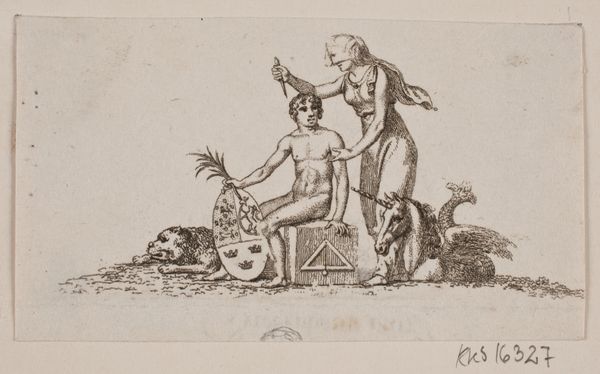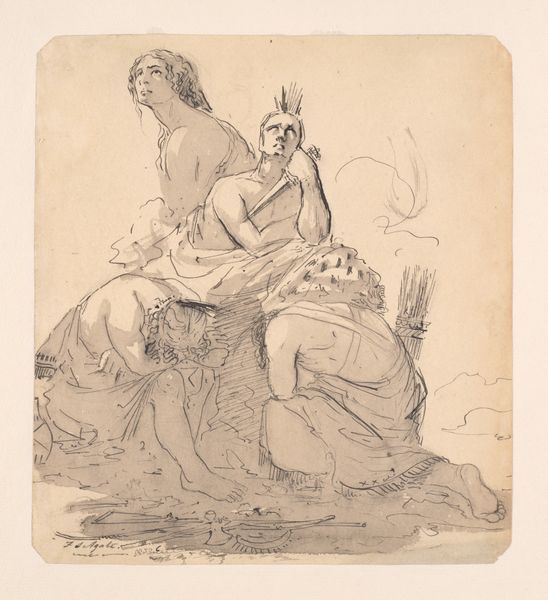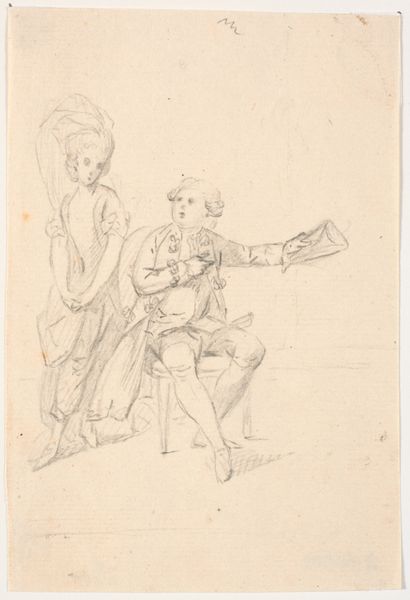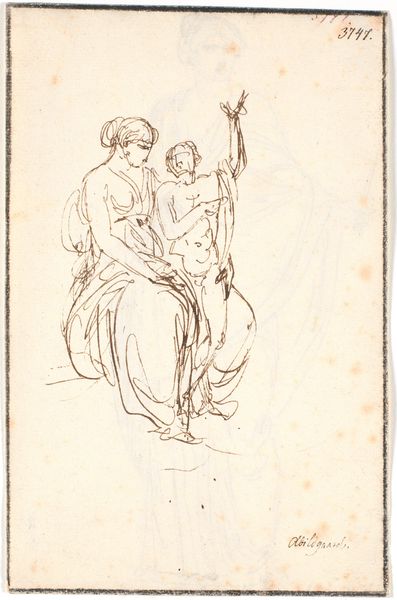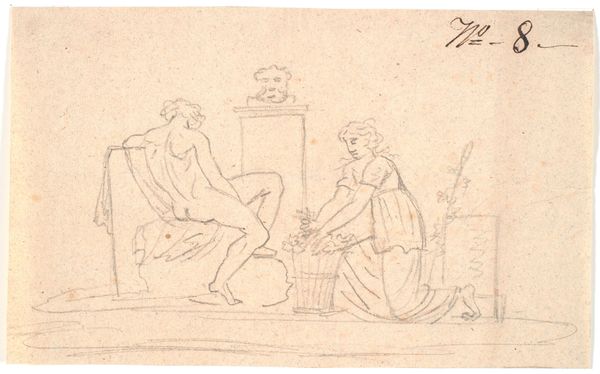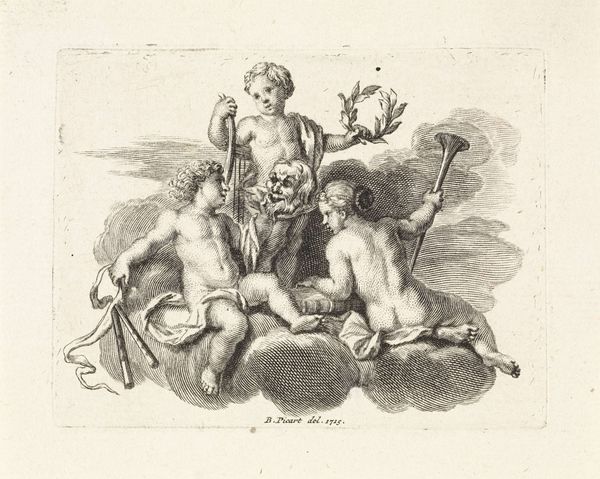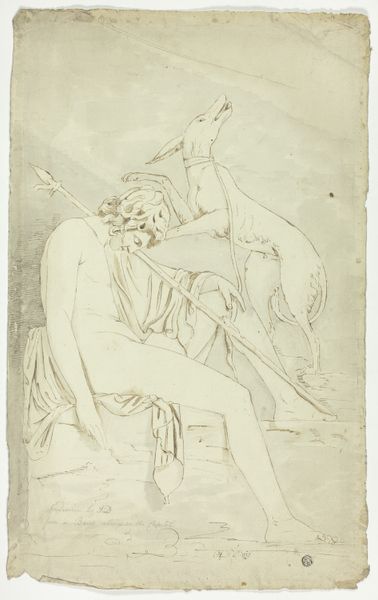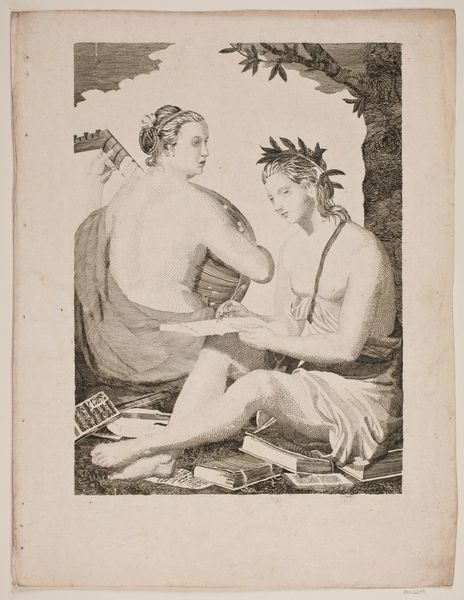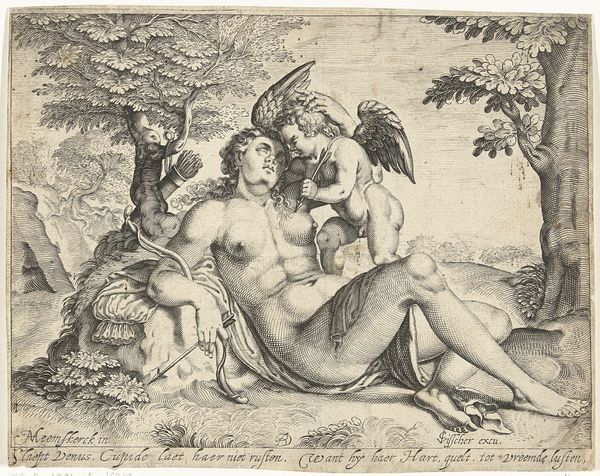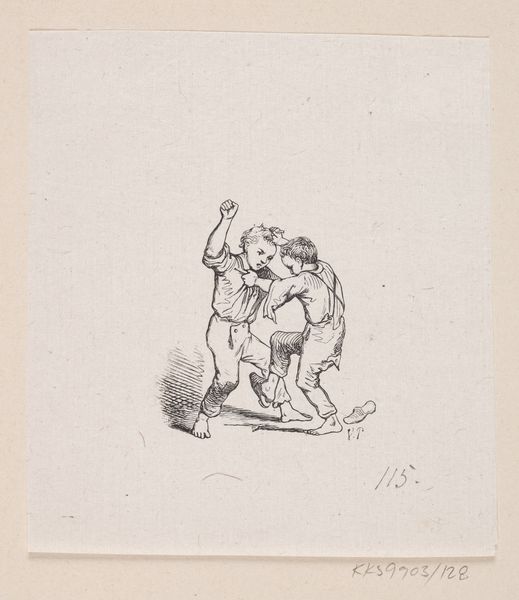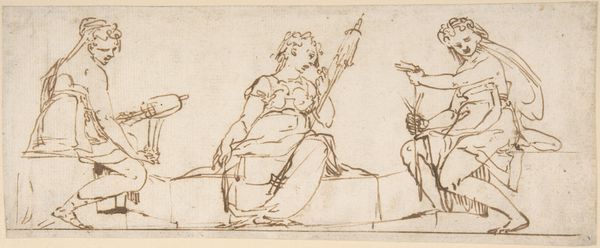
Siddende yngling og stående kvinde med en dolk 1765 - 1833
0:00
0:00
drawing, ink
#
portrait
#
drawing
#
classical-realism
#
figuration
#
ink
#
line
Dimensions: 60 mm (height) x 98 mm (width) (bladmaal)
Gerhard Ludvig Lahde made this pen and wash drawing, "Seated youth and standing woman with a dagger," sometime in the late 18th or early 19th century. The figures are rendered in a neoclassical style, drawing on classical Greek and Roman forms. Created during the Enlightenment, this artwork is part of a broader revival of classical aesthetics that reflected a desire for order and reason in the arts and society. The figures' idealized forms and the woman's dagger, evoke themes of virtue and heroism. The revival of neoclassicism was encouraged by institutions of art education such as the Royal Danish Academy of Fine Arts, where Lahde taught. These institutions hoped that, by revisiting the art of antiquity, artists might bring a new moral seriousness to the present. By studying the history of art academies and the writings of Enlightenment thinkers, we can learn more about the changing social role of art and the relationship between aesthetics and ethics in Lahde’s time.
Comments
No comments
Be the first to comment and join the conversation on the ultimate creative platform.
